Abstract
We studied the mechanism of ring chromosome 21 (r(21)) formation in 13 patients (11 unique r(21)s), consisting of 7 from five families with familial r(21) and 6 with de novo r(21). The copy number of chromosome 21 sequences in the rings of these patients was determined by quantitative dosage analyses for 13 loci on 21q. Nine of 11 r(21)s, including the 5 familial r(21)s, showed no evidence for duplication of 21q sequences but did show molecular evidence of partial deletion of 21q. These data were consistent with the breakage and reunion of short- and long-arm regions to form the r(21), resulting in deletion of varying amounts of 21q22.1 to 21qter. The data from one individual who had a Down syndrome phenotype were consistent with asymmetric breakage and reunion of 21q sequences from an intermediate isochromosome or Robertsonian translocation chromosome as reported by Wong et al. Another patient, who also exhibited Down syndrome, showed evidence of a third mechanism of ring formation. The likely initial event was breakage and reunion of the short and long arms, resulting in a small r(21), followed by a sister-chromatid exchange resulting in a double-sized and symmetrically dicentric r(21). The phenotype of patients correlated well with the extent of deletion or duplication of chromosome 21 sequences. These data demonstrate three mechanisms of r(21) formation and show that the phenotype of r(21) patients varies with the extent of chromosome 21 monosomy or trisomy.
Full text
PDF

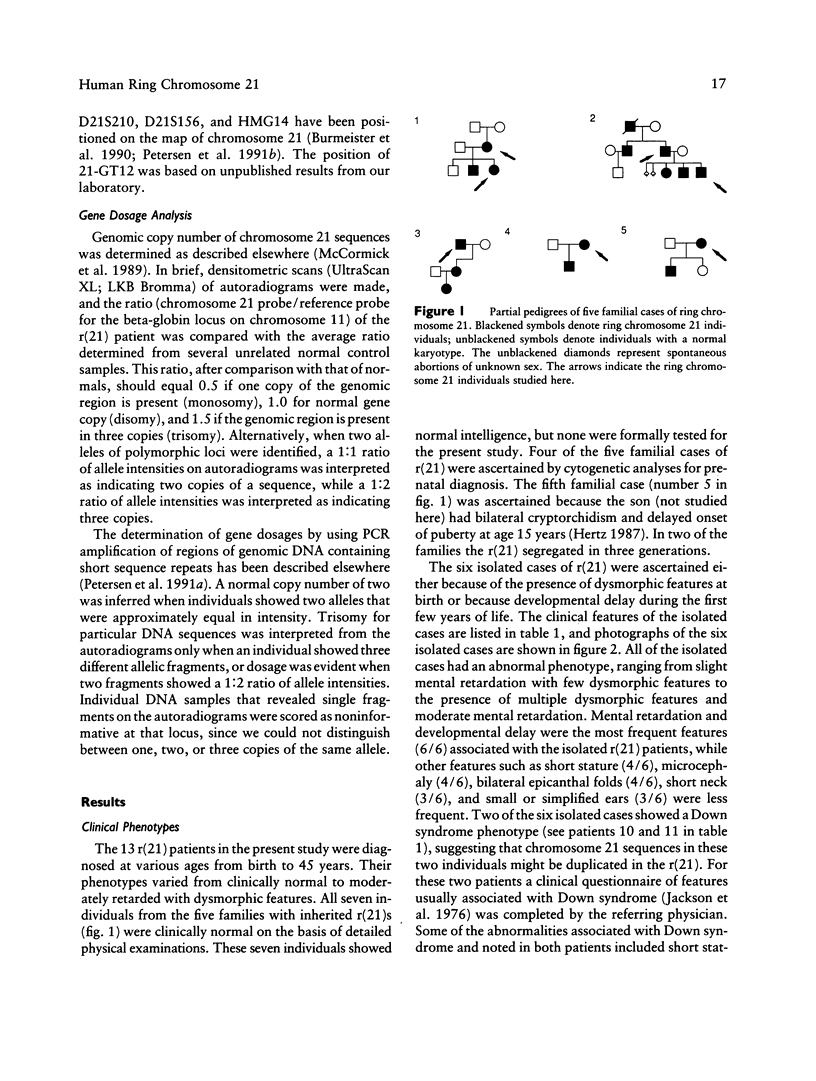
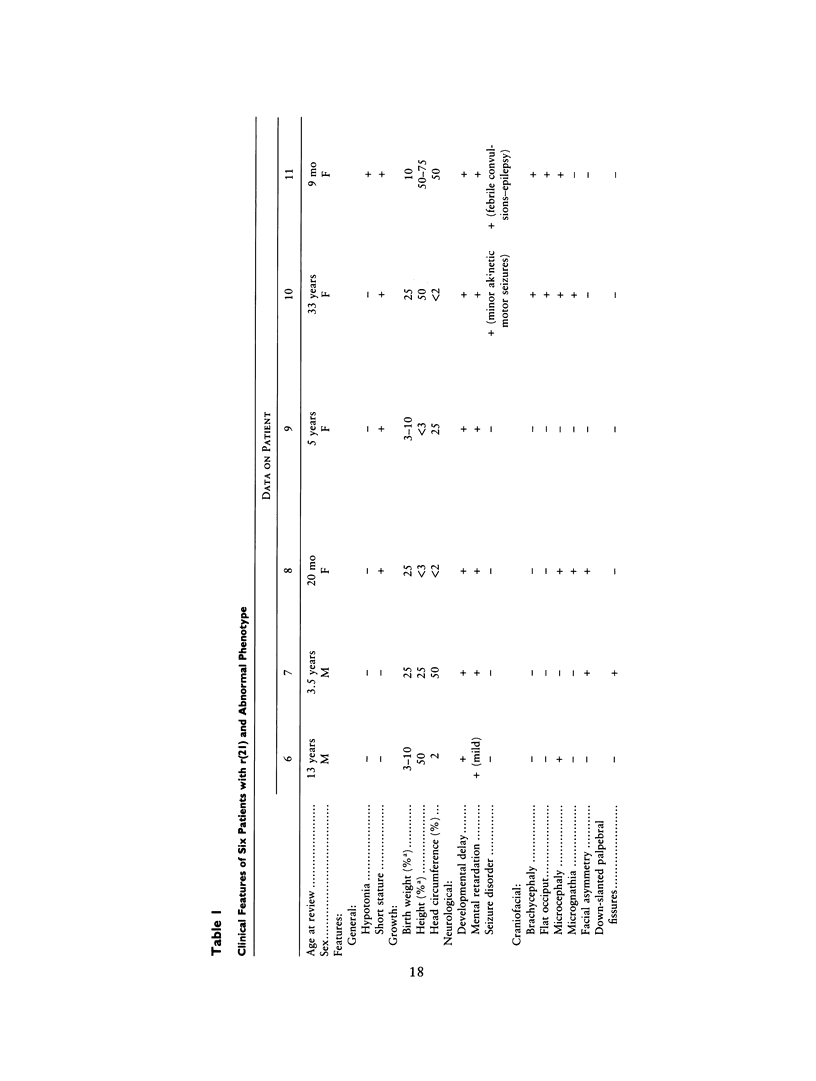
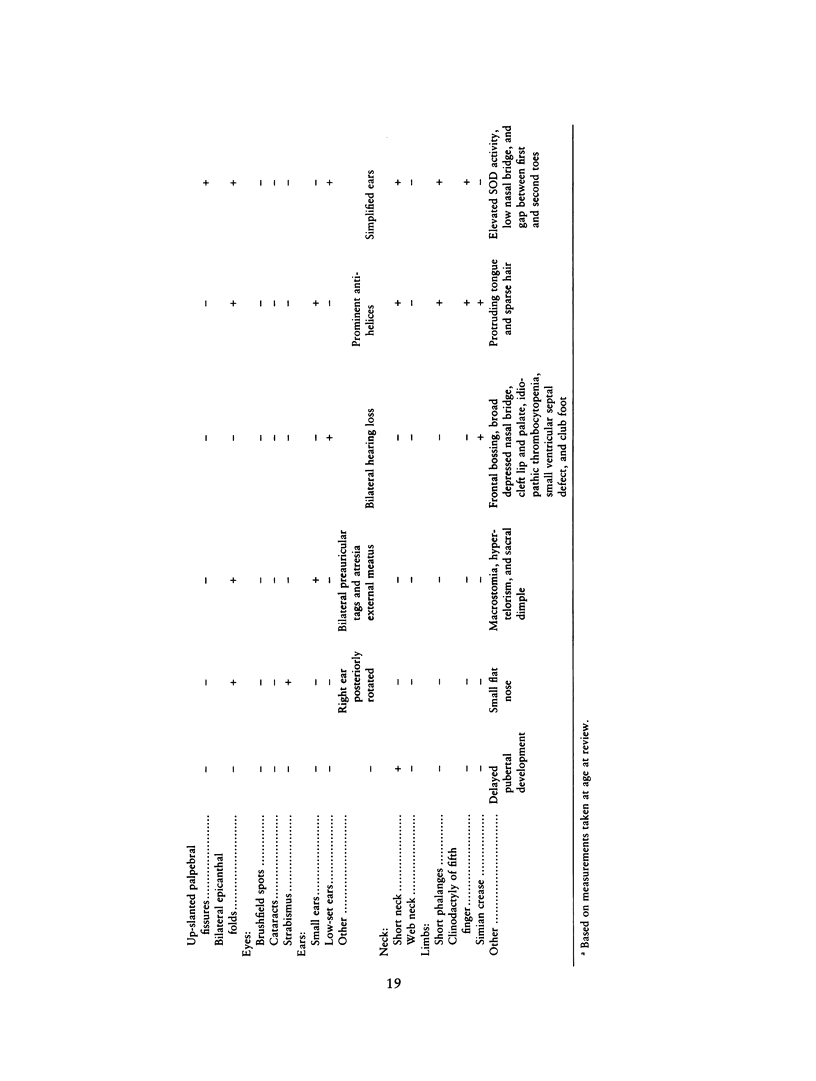

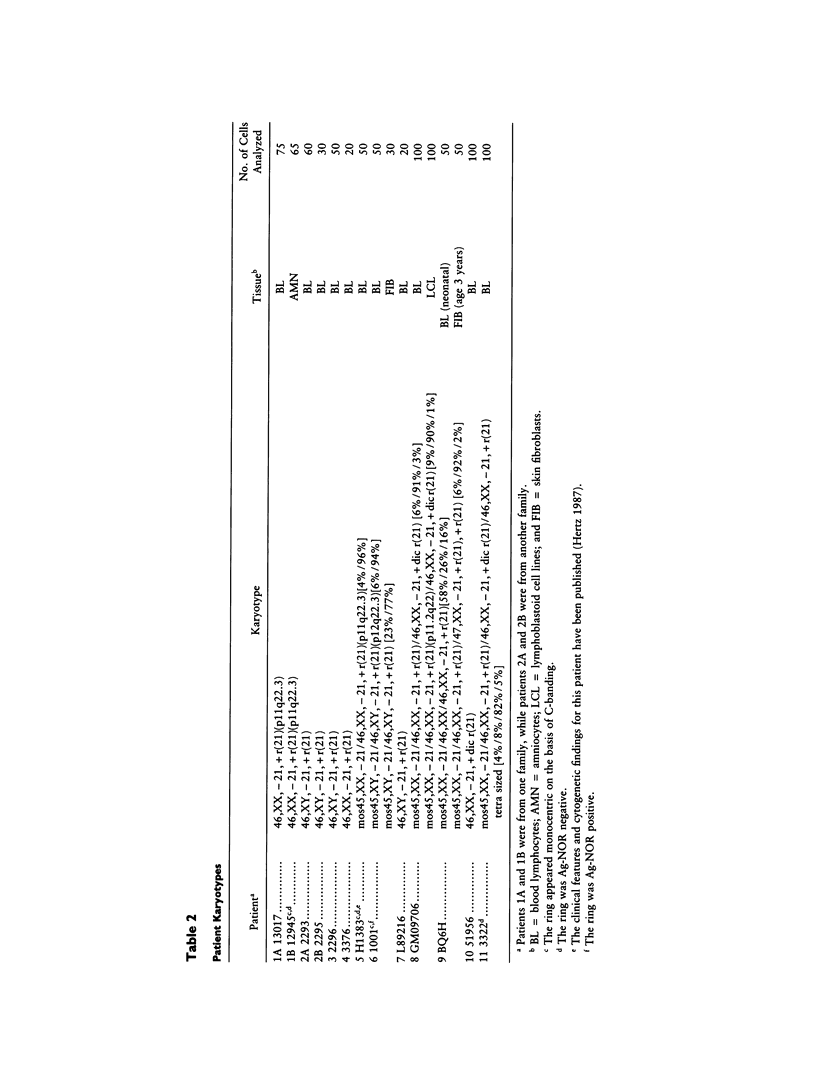
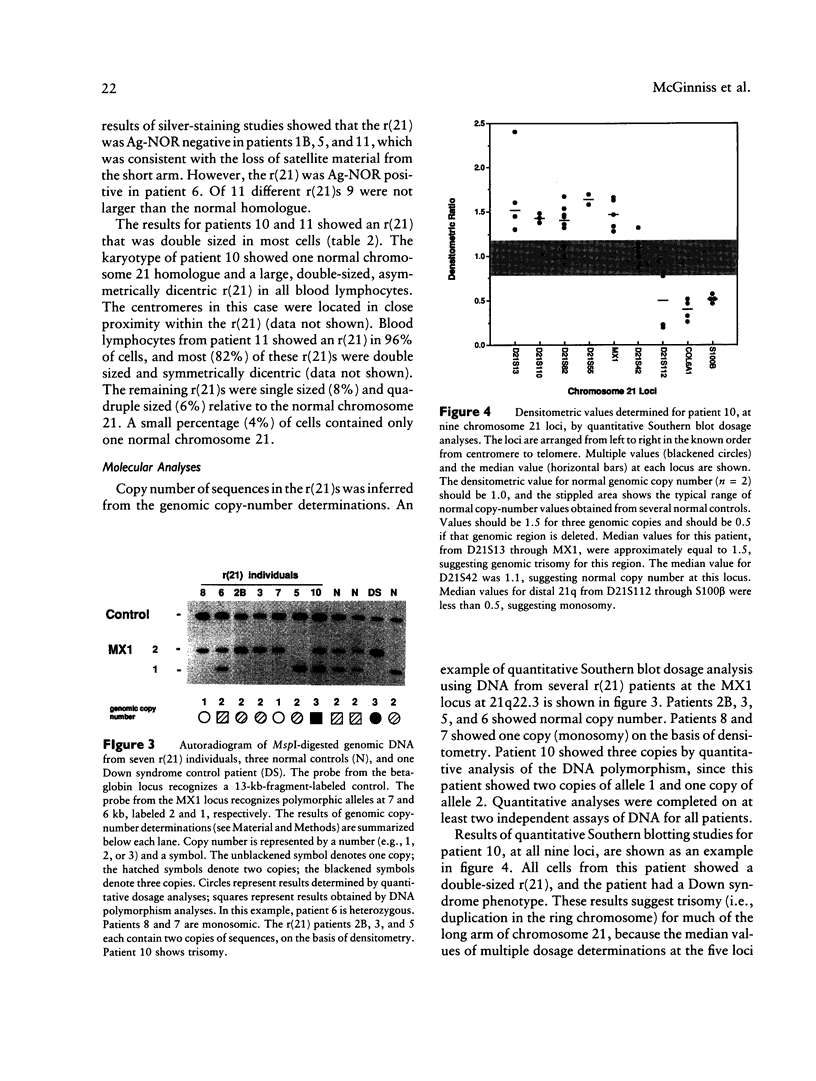
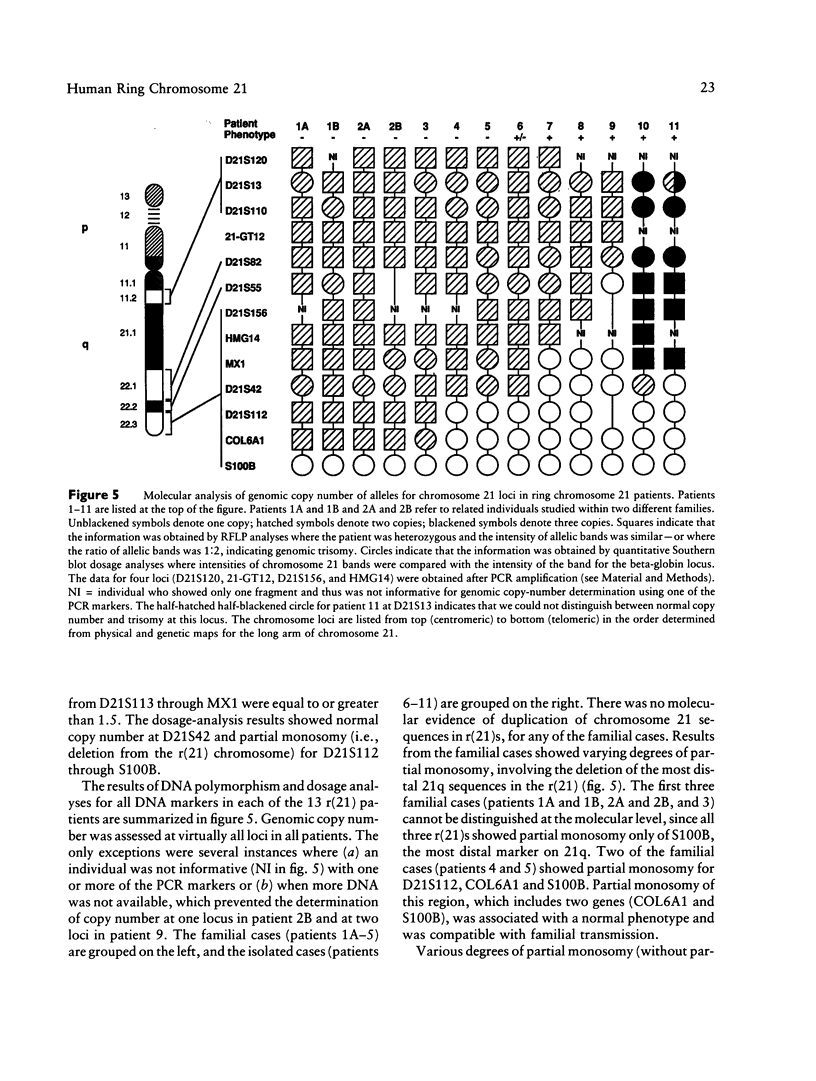


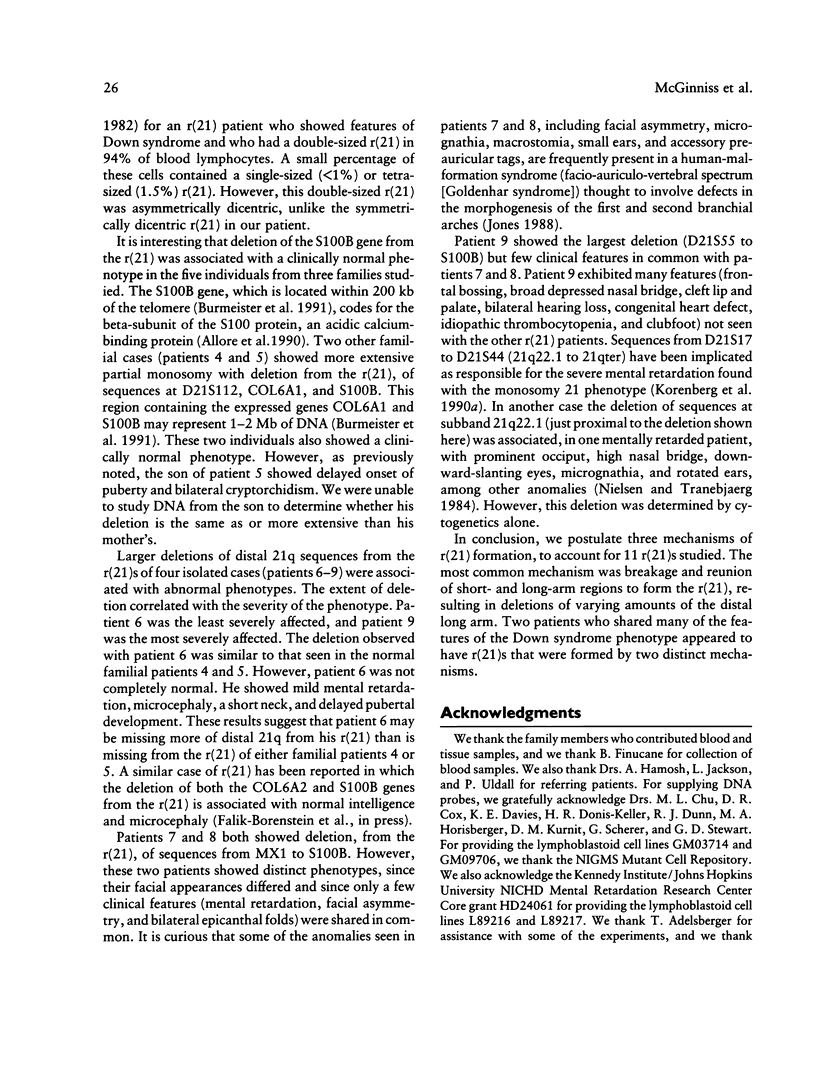

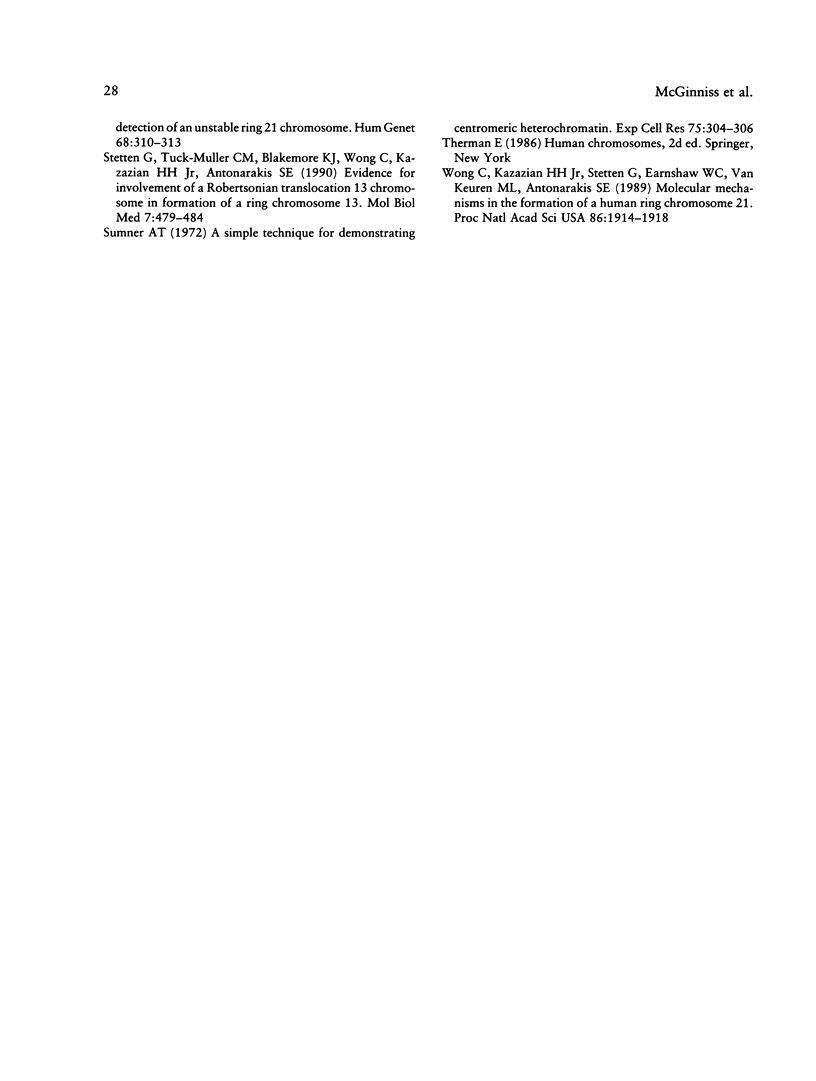
Images in this article
Selected References
These references are in PubMed. This may not be the complete list of references from this article.
- Allore R. J., Friend W. C., O'Hanlon D., Neilson K. M., Baumal R., Dunn R. J., Marks A. Cloning and expression of the human S100 beta gene. J Biol Chem. 1990 Sep 15;265(26):15537–15543. [PubMed] [Google Scholar]
- Burmeister M., Kim S., Price E. R., de Lange T., Tantravahi U., Myers R. M., Cox D. R. A map of the distal region of the long arm of human chromosome 21 constructed by radiation hybrid mapping and pulsed-field gel electrophoresis. Genomics. 1991 Jan;9(1):19–30. doi: 10.1016/0888-7543(91)90216-2. [DOI] [PubMed] [Google Scholar]
- Burmelster M., Cox D. R., Myers R. M. Dinucleotide repeat polymorphism located at D21S120. Nucleic Acids Res. 1990 Aug 25;18(16):4969–4969. doi: 10.1093/nar/18.16.4969. [DOI] [PMC free article] [PubMed] [Google Scholar]
- Goodpasture C., Bloom S. E. Visualization of nucleolar organizer regions im mammalian chromosomes using silver staining. Chromosoma. 1975 Nov 20;53(1):37–50. doi: 10.1007/BF00329389. [DOI] [PubMed] [Google Scholar]
- Hertz J. M. Familial transmission of a ring chromosome 21. Clin Genet. 1987 Jul;32(1):35–39. doi: 10.1111/j.1399-0004.1987.tb03320.x. [DOI] [PubMed] [Google Scholar]
- Ieshima A., Ogasawara N., Yamamoto Y., Kuroki Y. A case of r(21) with stigmata of atypical Down syndrome. Hum Genet. 1980;55(1):65–69. doi: 10.1007/BF00329128. [DOI] [PubMed] [Google Scholar]
- Jackson J. F., North E. R., 3rd, Thomas J. G. Clinical diagnosis of Down's syndrome. Clin Genet. 1976 May;9(5):483–487. doi: 10.1111/j.1399-0004.1976.tb01601.x. [DOI] [PubMed] [Google Scholar]
- Jacobs P. A. Mutation rates of structural chromosome rearrangements in man. Am J Hum Genet. 1981 Jan;33(1):44–54. [PMC free article] [PubMed] [Google Scholar]
- Korenberg J. R., Kawashima H., Pulst S. M., Ikeuchi T., Ogasawara N., Yamamoto K., Schonberg S. A., West R., Allen L., Magenis E. Molecular definition of a region of chromosome 21 that causes features of the Down syndrome phenotype. Am J Hum Genet. 1990 Aug;47(2):236–246. [PMC free article] [PubMed] [Google Scholar]
- Kosztolányi G. Does "ring syndrome" exist? An analysis of 207 case reports on patients with a ring autosome. Hum Genet. 1987 Feb;75(2):174–179. doi: 10.1007/BF00591082. [DOI] [PubMed] [Google Scholar]
- Lejeune J. De la duplication de structures circulaires. Ann Genet. 1968 Jun;11(2):71–77. [PubMed] [Google Scholar]
- Lewis J. G., Weber J. L., Petersen M. B., Slaugenhaupt S. A., Kwitek A., May P. E., Warren A. C., Chakravarti A., Antonarakis S. E. Linkage mapping of the highly informative DNA marker D21S156 to human chromosome 21 using a polymorphic GT dinucleotide repeat. Genomics. 1990 Oct;8(2):400–402. doi: 10.1016/0888-7543(90)90300-j. [DOI] [PubMed] [Google Scholar]
- McCormick M. K., Schinzel A., Petersen M. B., Stetten G., Driscoll D. J., Cantu E. S., Tranebjaerg L., Mikkelsen M., Watkins P. C., Antonarakis S. E. Molecular genetic approach to the characterization of the "Down syndrome region" of chromosome 21. Genomics. 1989 Aug;5(2):325–331. doi: 10.1016/0888-7543(89)90065-7. [DOI] [PubMed] [Google Scholar]
- Nielsen F., Trånebjaerg L. A case of partial monosomy 21q22.2 associated with Rieger's syndrome. J Med Genet. 1984 Jun;21(3):218–221. doi: 10.1136/jmg.21.3.218. [DOI] [PMC free article] [PubMed] [Google Scholar]
- Petersen M. B., Economou E. P., Slaugenhaupt S. A., Chakravarti A., Antonarakis S. E. Linkage analysis of the human HMG14 gene on chromosome 21 using a GT dinucleotide repeat as polymorphic marker. Genomics. 1990 May;7(1):136–138. doi: 10.1016/0888-7543(90)90531-x. [DOI] [PubMed] [Google Scholar]
- Petersen M. B., Schinzel A. A., Binkert F., Tranebjaerg L., Mikkelsen M., Collins F. A., Economou E. P., Antonarakis S. E. Use of short sequence repeat DNA polymorphisms after PCR amplification to detect the parental origin of the additional chromosome 21 in Down syndrome. Am J Hum Genet. 1991 Jan;48(1):65–71. [PMC free article] [PubMed] [Google Scholar]
- Petersen M. B., Slaugenhaupt S. A., Lewis J. G., Warren A. C., Chakravarti A., Antonarakis S. E. A genetic linkage map of 27 markers on human chromosome 21. Genomics. 1991 Mar;9(3):407–419. doi: 10.1016/0888-7543(91)90406-5. [DOI] [PubMed] [Google Scholar]
- Rahmani Z., Blouin J. L., Creau-Goldberg N., Watkins P. C., Mattei J. F., Poissonnier M., Prieur M., Chettouh Z., Nicole A., Aurias A. Critical role of the D21S55 region on chromosome 21 in the pathogenesis of Down syndrome. Proc Natl Acad Sci U S A. 1989 Aug;86(15):5958–5962. doi: 10.1073/pnas.86.15.5958. [DOI] [PMC free article] [PubMed] [Google Scholar]
- Stetten G., Sroka B., Corson V. L., Boehm C. D. Prenatal detection of an unstable ring 21 chromosome. Hum Genet. 1984;68(4):310–313. doi: 10.1007/BF00292590. [DOI] [PubMed] [Google Scholar]
- Stetten G., Tuck-Muller C. M., Blakemore K. J., Wong C., Kazazian H. H., Jr, Antonarakis S. E. Evidence for involvement of a Robertsonian translocation 13 chromosome in formation of a ring chromosome 13. Mol Biol Med. 1990 Dec;7(6):479–484. [PubMed] [Google Scholar]
- Sumner A. T. A simple technique for demonstrating centromeric heterochromatin. Exp Cell Res. 1972 Nov;75(1):304–306. doi: 10.1016/0014-4827(72)90558-7. [DOI] [PubMed] [Google Scholar]
- Wong C., Kazazian H. H., Jr, Stetten G., Earnshaw W. C., Van Keuren M. L., Antonarakis S. E. Molecular mechanism in the formation of a human ring chromosome 21. Proc Natl Acad Sci U S A. 1989 Mar;86(6):1914–1918. doi: 10.1073/pnas.86.6.1914. [DOI] [PMC free article] [PubMed] [Google Scholar]




